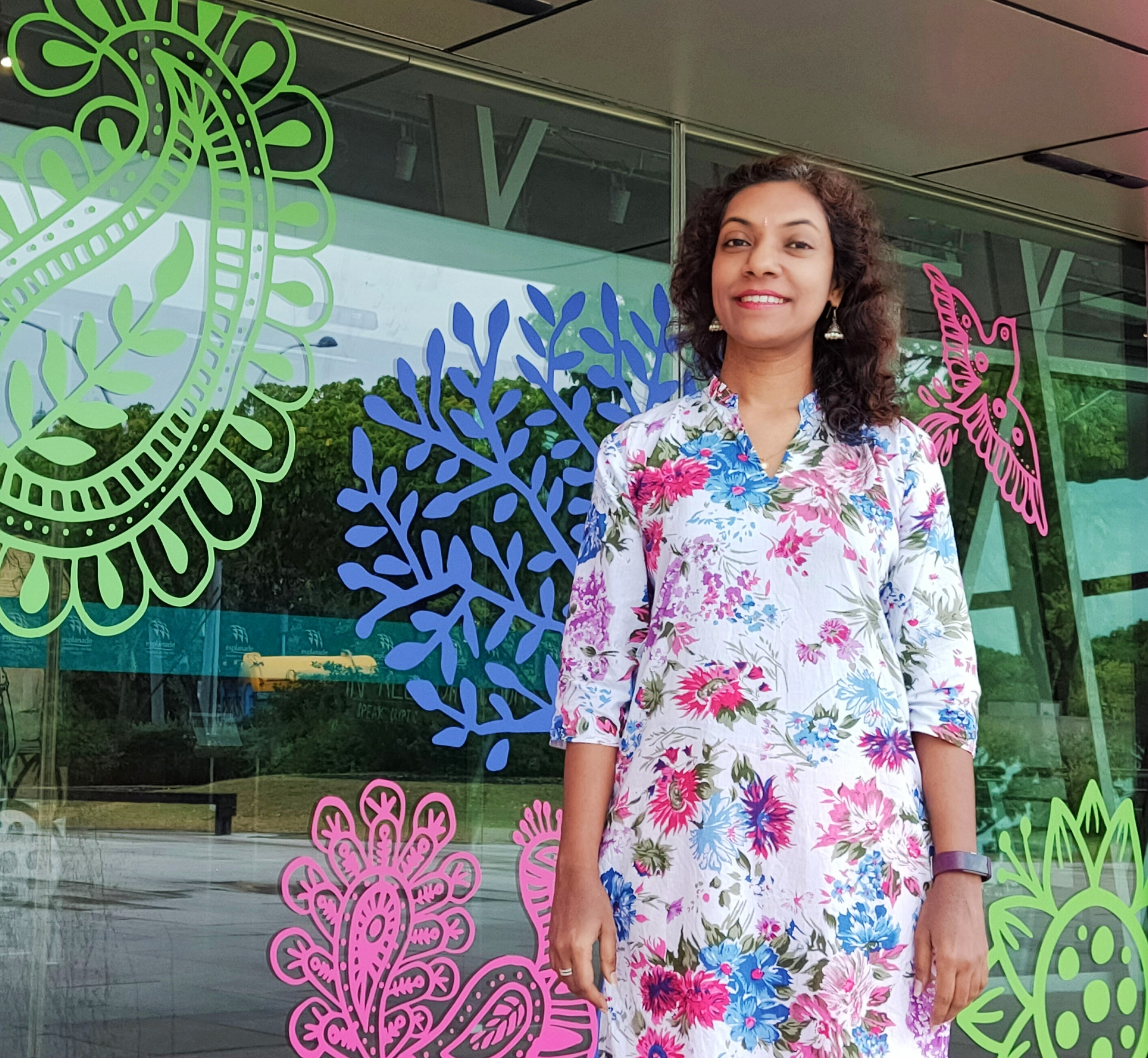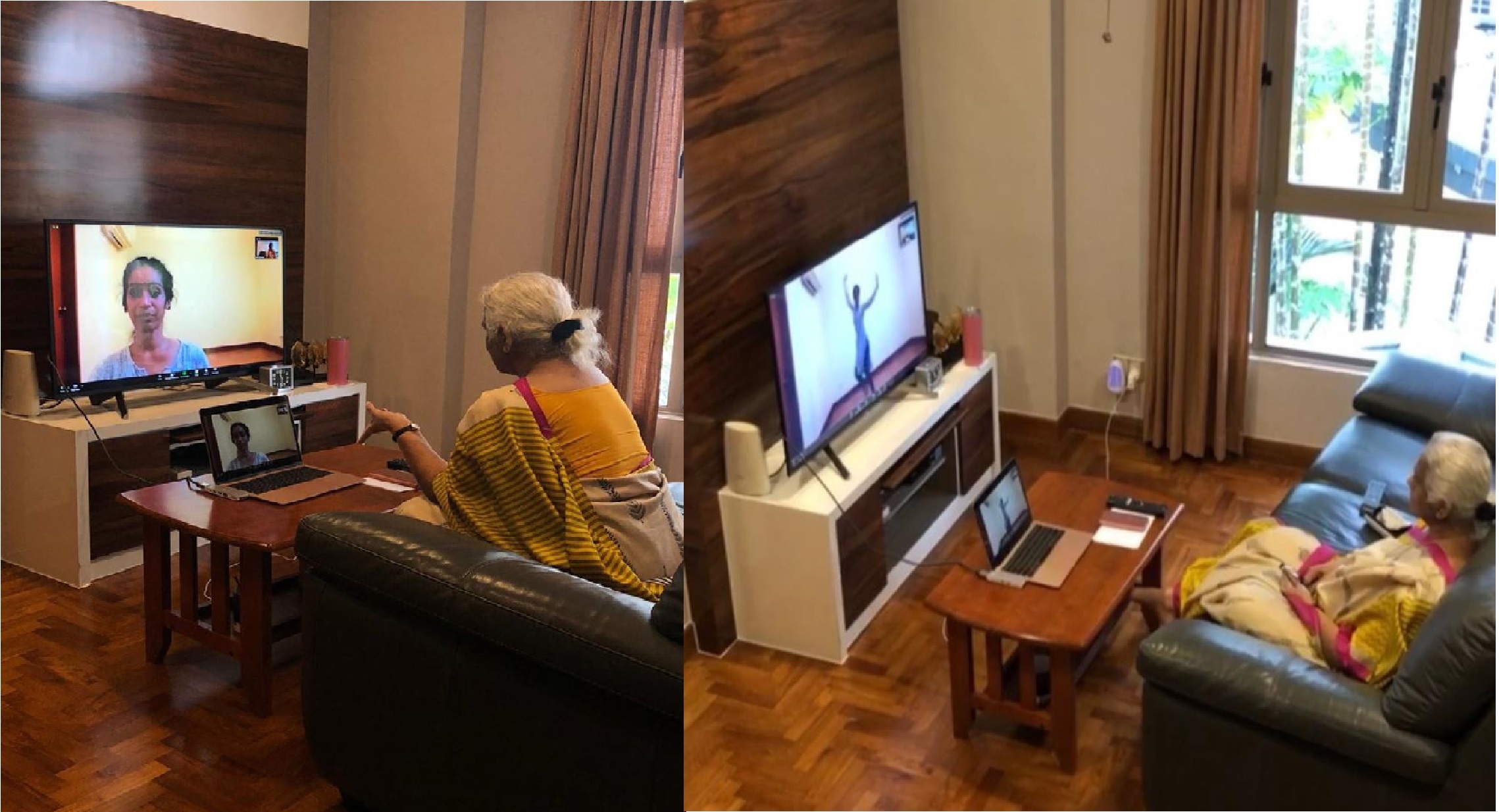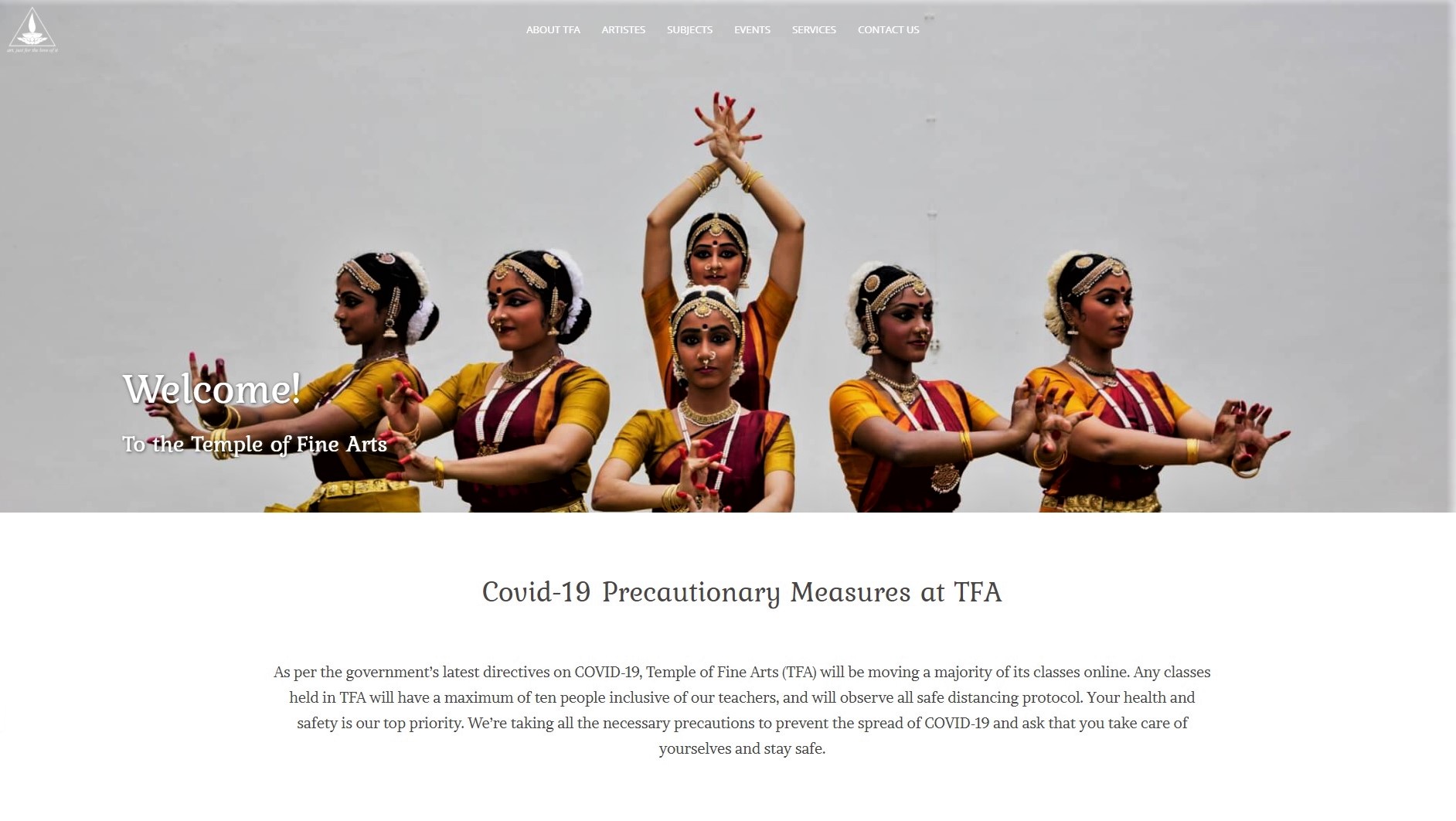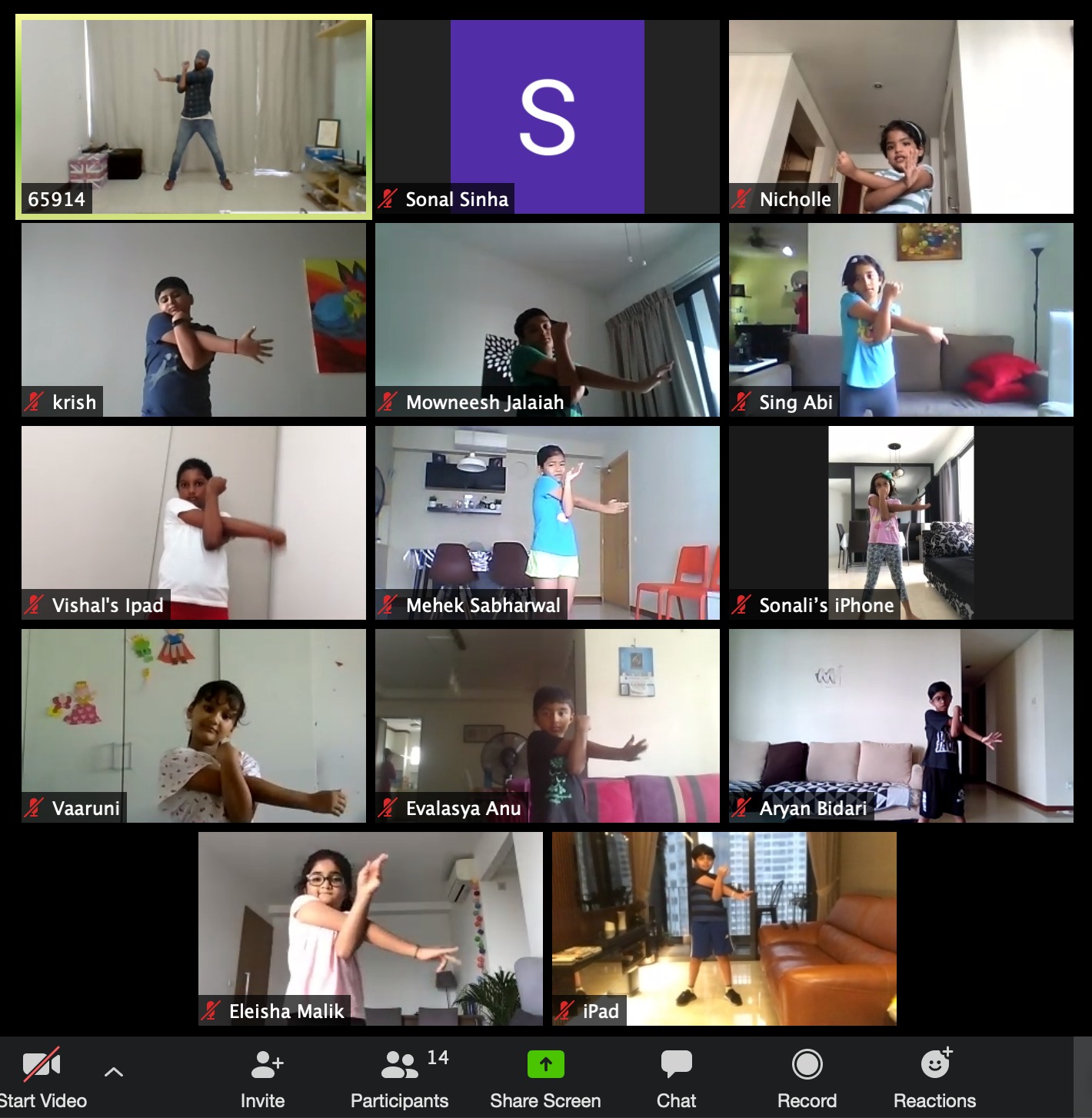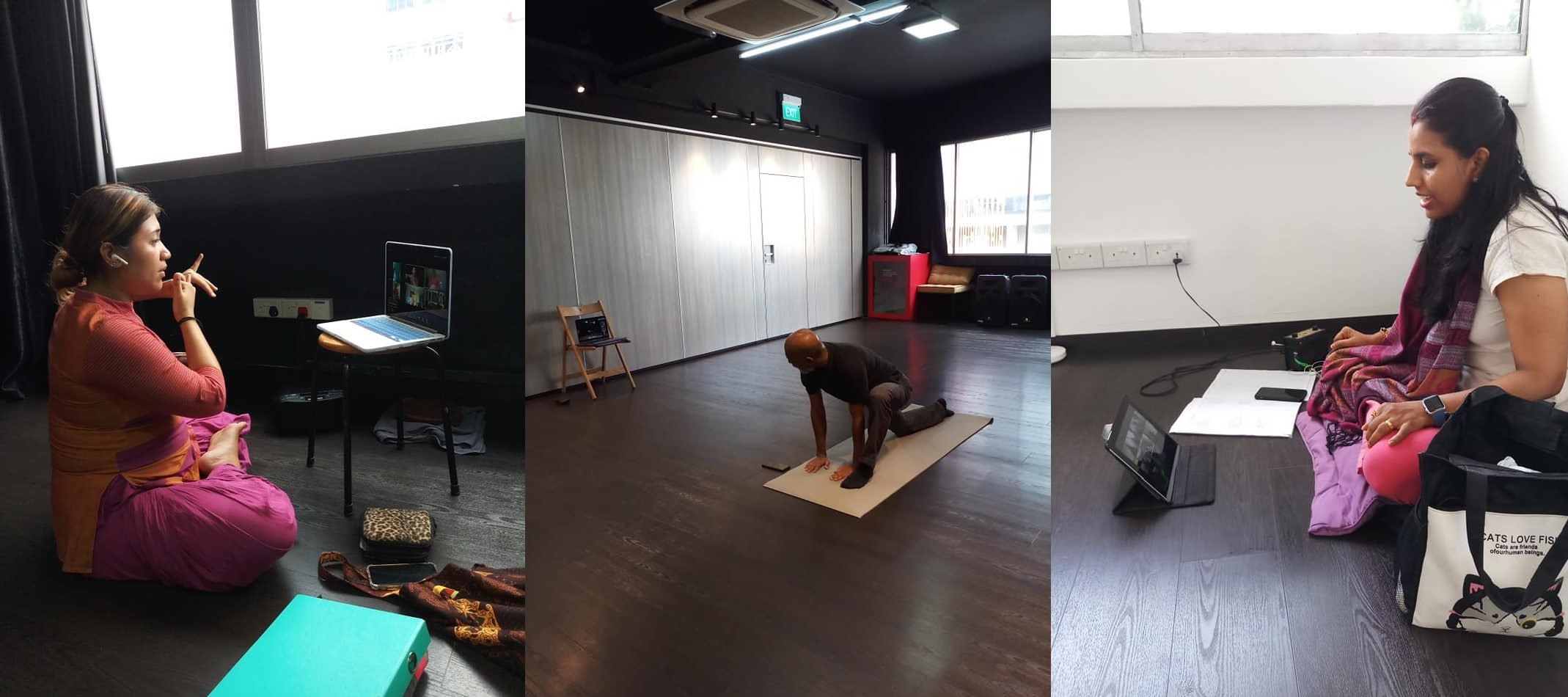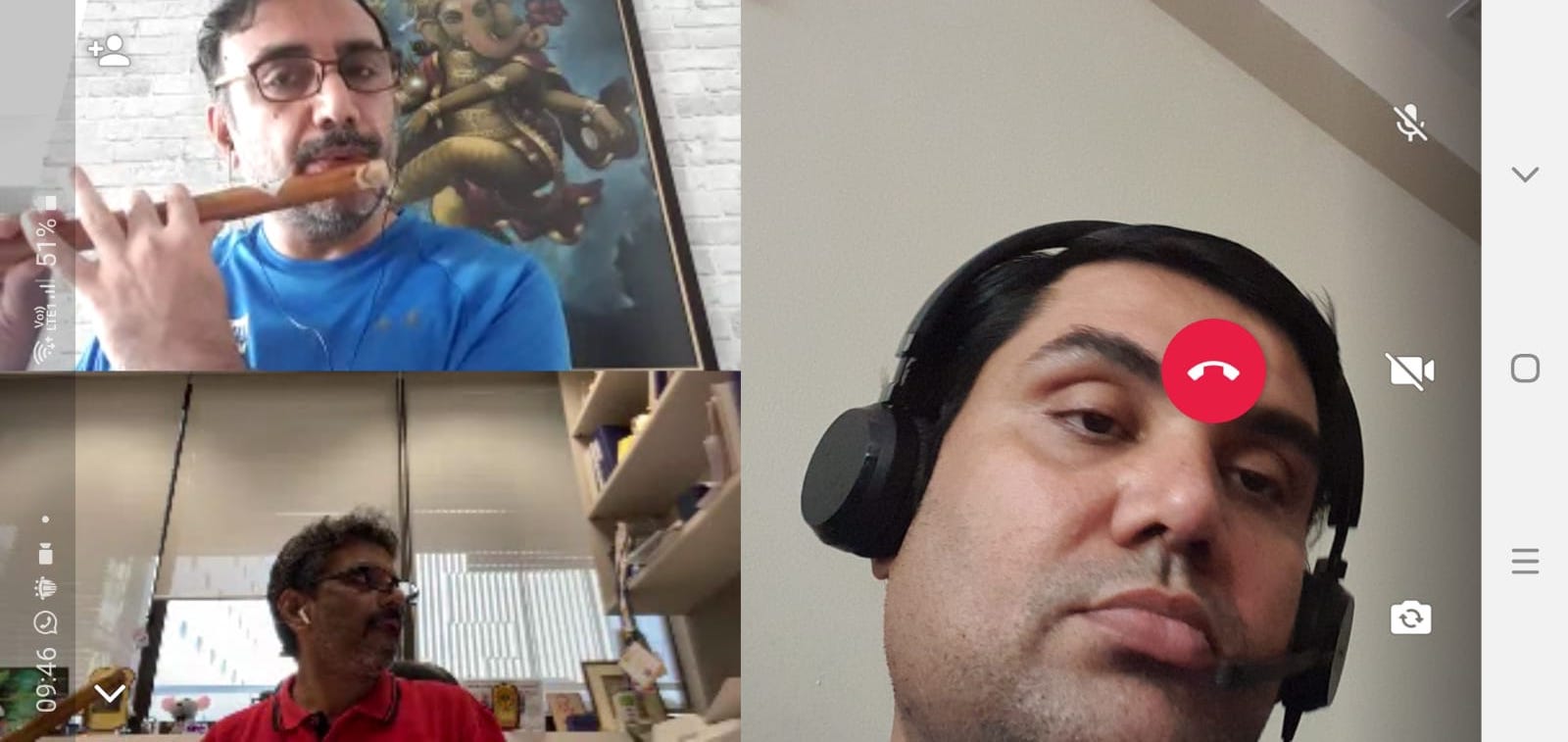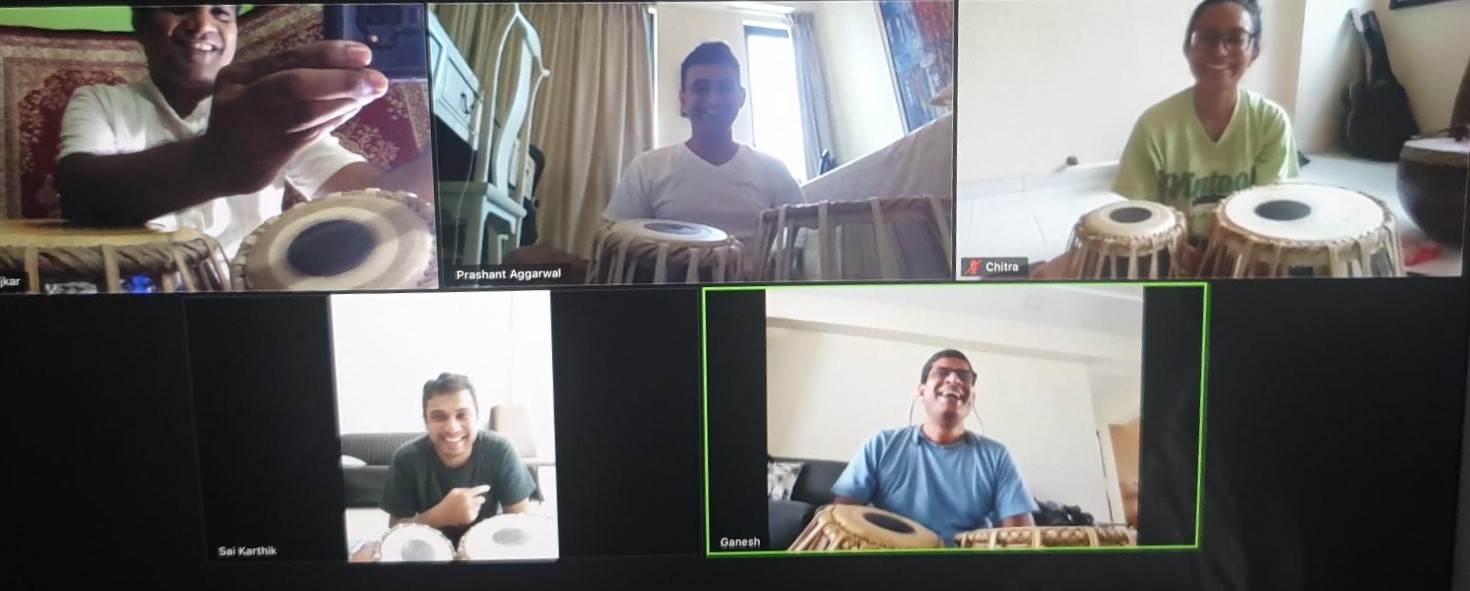As theatres, auditoriums, music halls and art schools go silent, Rajeswari Ramachandran, producer of Kalaa Utsavam at Esplanade has some great advice for practitioners of Indian performing arts in Singapore. “Something as simple as playing an audio of the tanpura can bring solace and peace in a situation where things are unpredictable and chaotic,” she says
“Listening to music or watching dances by senior artists online, is the next best thing. It’s definitely a good time to be inspired by veterans who have contributed to the scene.” Rajeswari adds.
Classical dancing, singing, acting and other forms of performing arts that survive and thrive on physical and social interactions, such as teachers giving inputs and correcting, students questioning and clarifying doubts, all came to an abrupt halt due to COVID-19.
But not for too long. A few weeks into the announcement of cutting social contact, the innovative arts industry in Singapore improvised and went online.
At Bhaskar Arts the biggest inspiration came from the top – Mrs Santha Bhaskar the Artistic Director (BAA) and Advisor (NAS). “She has taken this situation in her stride and quickly brought herself up to speed on how to get an online class going, and has even been able to advise other teachers on creative ideas to keep students engaged during online classes. She is 80 years old!” exclaims Thava Rani, Company Manager of Bhaskar Arts.
COVID-19 – A dampener
Many performances and festivals have been cancelled or postponed, such as the much awaited Singapore Indian Fine Arts Society (SIFAS) Festival, which was slated to take place from March 15 to May 21, as well as most of the self-produced performances of Bhaskar's Academy of Dance and Nrityalaya Aesthetics Society (NAS).
“All our outreach programmes with schools and the community at large have also been cancelled, as are commissioned works of any nature”, says Rani.
Temple of Fine Arts (TFA) has postponed all upcoming events and moved 100% of its classes online. Says, Lalitha Sandrasegran, President, TFA, “Every sector has been impacted, and the arts industry has been directly affected as well.”
“The situation is of course not ideal”, says Rani. “Nothing beats the face-to-face interaction between teacher and student. Given the circumstances, online teaching allows the continuity of learning and gives the student some form of normalcy”.
Swift response – safety first
The institutes stayed abreast of the evolving COVID-19 directives sent out by the Singapore government and reacted quickly, including through their social media handles.
“At our teaching wing Nrityalaya Aesthetics Society, we moved in tandem with the government policies. Starting with temperature checks and record-keeping of visitors, we have now moved to online lessons for our students”, says Rani.
Ensuring continuity through online learning
COVID or no COVID, there will be no drop in the talent pool or talent level, the institutes decided.
“We believe in maintaining the continuity to the learning journey in all fields of education including performing arts. Students are learning classical music like Hindustani & Carnatic vocal; classical dance like Bharatanatyam, Odissi and Kathak; and classical instruments like flute and keyboard, virtually from home. Both our Gurus and teachers have adapted very well to what could become a new normal for some enrichment classes,” says Sarita Alurkar, Associate Director and Head, Global Indian Cultural Centre (GICC).
GICC, an organisation under the Global Schools Foundation, promotes performing, visual arts and skills enhancing programmes has introduced virtual classes for all their enrichment programmes, excluding sports.
Students at the intermediate and advanced levels who already have a strong foundation can continue building on that through online classes.
“For students in the beginner levels, teachers are employing various methods to ensure students understand the lesson. In this case the pace of teaching and learning may be slowed down but we are committed to maintaining the quality”, says Rani.
Moreover, with younger students, it takes longer to introduce them to the platform and to the etiquette required for an online class compared to adult students who are familiar with using video calls for their own full-time jobs, she adds.
Bhaskar’s teachers have included theory sessions, video challenges and story-telling in their lesson plans and that has helped to keep their students engaged in class.
TFA too has online classes complemented with take-home assignments that cover both practical and theoretical aspects of their art form to ensure students continue to learn.
Adapting to change – students, teachers and parents too
Teachers have had to put in twice the effort and time to conduct online classes, which require a lot more planning before facilitating the class itself.
Parents have rallied to help their children prepare and set up for online classes and to ensure that they complete their take-home assignments.
Students have taken well to online learning, says Alurkar. “There is a lot of excitement amongst them to join these classes. In fact, we have noted 100% attendance in many programmes which was not the case earlier. Students and teachers are creatively trying to make the most out of this challenging situation”.
Not just students, teachers of all ages too have not just adapted but have stretched themselves through creative, innovative and positive engagements.
“We’ve been overcoming the challenge of being physically separated from our students by going the extra mile to create and curate content to continue engaging them,” says Sandrasegaran.
“We have been working closely with our teachers to adapt to the situation and ensure that they are well-prepared to continue nurturing our students through the Arts”.
“Teachers are now planning and executing the classes differently as opposed to traditional methodology to ensure that there is no compromise on the content of the programme,” adds Alurkar.
The virtual classroom – challenges and innovations
TFA’s teachers have been introducing novel material including video content, recordings, diagrammatic guides and detailed lesson plans for students to follow from the comfort of their homes.
Bhaskar Arts teachers look for additional ways to keep students engaged, which though mentally and physically draining on them, is rewarding.
“Our teachers are still on the learning curve on how to manage an online class but are rising to the occasion and embracing it wholeheartedly”, says Rani.
It is however not all smooth sailing and there are several challenges such as logistics, technical infrastructure and limitations in internet connectivity.
“If the connection is not strong enough then there is a time lag in receiving the data. This was particularly observed in classical vocal classes”, says Alurkar, a sentiment echoed by Rani, who says the lag issue was one of the biggest challenges especially in group online classes.
GICC teachers have devised a way to counter this problem by taking small sections of students in a one-on-one interaction as this medium offers the flexibility of both individual as well as group learning.
Most challenges crop up real-time though, and it's all about handling them as they come.
“Moving classes online, comes with the challenge of ensuring that we can support the volume of classes that now have to be held on a completely different medium and we are thankful for the government’s support during this time”, says Sandrasegaran.
Remote learning here to stay
All the performing arts schools were unanimous in saying that remote learning is not going away any time soon. It is here to stay, if not as the main teaching method, then certainly as an option or a supplementary on a small scale, even after the COVID-19 pandemic is overcome.
“In times of crisis, we’re often pushed to think ahead of the curve and innovate to adapt. While remote teaching is not ideal and not something that can replace physical classes in the long-term, our teachers have been creating valuable content for online classes. We are looking into how we can use this as supplementary material in the future, even after the COVID-19 crisis has quietened”, says Sandrasegaran.
Alurkar concurs. “Remote teaching and learning will certainly remain to be an option for some programmes more than others in the future. It is an avenue which was not explored earlier. Now having implemented it, I think a lot more teachers will resort to keeping it as an option for future classes. It is of great benefit for students who are not able to attend classes physically for some reason. It offers flexibility and continuity to the learning process”, she says.
Not on a large scale, says Bhaskar Arts’ Rani as, “The preference is to have face-to-face teaching-learning. But now that we have forayed into remote-teaching and continue to adopt new techniques and teaching methodologies for these sessions, it has opened up a new avenue for us, which can be explored further for the future”.
Most of the stakeholders involved in the online learning process such as the parents, teachers, members of the arts community and students have been supportive and encouraging the efforts based on the feedback the schools have received so far.
To continue this flywheel of positive energy, TFA created a social media challenge called #ArtsAtHome, where they have asked followers to share how they have been spending their time at home with the arts.
“We’ve seen so much creative, positive and encouraging content through this small social media initiative”, says Sandrasegaran.
She believes that, “This crisis has prompted us to relook the way that the arts can be integrated into our lives at home. How the Arts are able to give us strength and respite has been a really important takeaway. We thank our teachers, students, and art patrons for their continued support and hope that we can come out of this stronger together”.
Alurkar thinks that, “Virtual classrooms are an option available to us going forward. It provides us with the flexibility to hold classes at our own convenience. We are only limited by our imagination to make the most of this medium. There is no denying the fact that traditional methods of teaching and learning have their own merits, but this will also become a popular means as we go along”.
Many have expressed that they look forward to such online classes in the future to break the monotony, but some still prefer the traditional method of teaching and learning which has its own merits of social interaction and communication.
But there is no doubt that virtual learning in the sphere of performing arts has carved a niche for itself in the time of COVID-19 and is here to stay.
Rajeswari believes that, “For students of the arts, online classes are the best alternative for learning, as practice should and can still be done within the comfort of their homes”.
“As faith and prayers are the hope for better times, the arts can definitely be the support system for getting through tough times”. We totally concur with Rajeswari on this.

